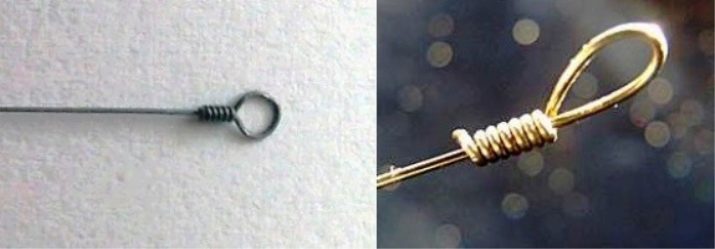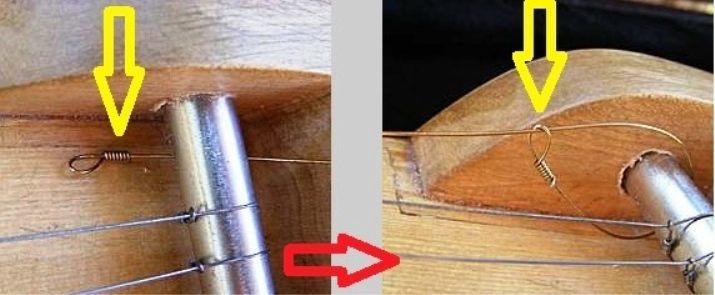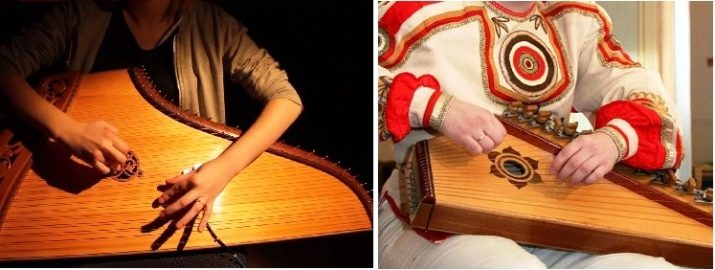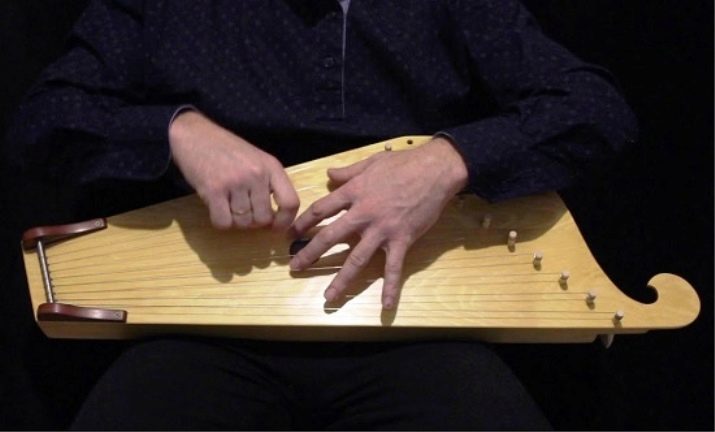Playing the harp

Gusli is an archaic string-plucked folk musical instrument that has many analogues not only in different regions of Russia, but also in other countries of the world (Lithuania, Finland, Estonia, and so on). But Russian gusli have their own uniqueness, differing both in design and in the way of playing.
How do you put the strings?
Almost any person got acquainted with this musical instrument in childhood. For example, looking at pictures in children's books with Russian folk tales or epics, when watching historical films, while visiting a local history museum.
However, few people know the details of how they play the harp, hold them, as well as how they attach the strings and how many of them are on the instrument.
With a string set and you need to start to learn about all of the above, if somehow a person had a harp, after which he really wanted not only to put them in order, but also to learn how to play.

Gusli differ from each other in string sets, as well as their structure. The number of strings can vary from 3 to 30 pieces. and more. However, the most common models of the following types:
- 5 strings;
- 7 strings;
- 9 strings;
- 15 strings;
- 16 strings;
- 18 strings.
Gusli strings have different lengths and sections, due to which their unequal sound occurs: short and thin ones sound, of course, higher than long and thick ones (the vibration frequency of long strings is lower, and the thickness, in turn, also gives a significant decrease in tone). The first string on 7-string gusli models is the bass string called "bourdon" or "zero". It is always tuned to the prima (main tone) of one of the chords that can be played on the harp. Usually it is "before".
For example, consider the tuning of seven-string gusli (starting with the bass one): CDEFGABb... The strings form 2 tonal accords: C major (strings CEG) and D minor (strings DFA). The remaining high B-flat string (Bb) can convert a C major chord to a C7 seventh chord, or create an inverted C major triad in B flat major, along with the sounds “re" and "F". In the image below, the string sounds of the first two named chords - C and Dm - are indicated in different colors:

The psaltery usually has the shape of an elongated trapezoid. The strings are stretched along the extended side above the soundboard and the resonator hole of the instrument at a distance of 10 to 20 mm from the plane of the soundboard... On the narrow sidewall of the gusli body, a tailpiece is installed, which is a rod made of metal or wood and is attached between two "ears" (holes made in the sidewall). On the wide side, opposite from the tailpiece, there are tuners, which provide tuning of the instrument to the desired mode.
Wire sources of musical sound can be structurally directed either parallel to each other at a distance of 10 mm, or fan out from the tailpiece to the tuning pegs. In simpler gusli, holes are drilled in advance on the "heel", into which a tailpiece is inserted in the form of a bracket.
Each string is set on the harp according to the following algorithm (on the example of a tailpiece made of a rod on the "ears").
- A loop is made at one of the ends of the metal string using pliers and platypuses. The final result should look something like this:

- The looped end of the string is pushed under the tailpiece towards the tuning pegs... The free end of the string is threaded into the loop so as to form a loop around the tailpiece shaft and pulled out completely. The loop around the bar can be tightened, but without effort.

- Now all that remains is to secure the free end of the string to the corresponding tuning peg. on the other side of the gusli resonator box. On the front side there are only fastening pins to which the strings are attached, and the screws themselves for rotating the tuning pegs when tuning the instrument are located on the back side of the tuning pegs. Through holes are drilled in the strip for the pegs.

- Fastening gusli strings to pegs not much different from the same process on other stringed plucked instruments (mandolin, balalaika and guitar). It is necessary to insert the not too long end of the string into the hole of the fastening pin, make 1/2 turn with this segment around the tuning peg, insert it again into the hole from the same side and start tightening the string with the screw.
- Try to make neat turns - one next to the other... 4-5 turns will be enough. This is exactly how much the length of the string should be calculated at the beginning of its installation. But experience will come with practice. You should not give a strong tension: the final tuning of the instrument is made after the installation of the entire string set.
- Cut off that end of the string with pliersthat remained after the second threading it into the hole of the fastening pin.
The last step must be done, otherwise the freely protruding end of the wire can negatively affect the overall sound of the instrument.
This should be done with the entire string set.... When finished, you can start tuning the gusli by ear or by the tuner. The last turn on the tuning pin must be separated from the rest before finishing tuning, since otherwise the instrument will sound too dull or with extraneous overtones.
How to hold the instrument?
The psaltery should be kept uprightwhile they can lean their lower side on the knees of a seated musician. The strings of the gusli should be directed horizontally, and the bottom of them is traditionally the bass one (the longest and thickest in models with a different-caliber set).

When playing, the guslar's hands are on the strings or above the strings in the area of the resonator hole. Their fingers are equally capable of extracting sounds from the strings, and muffling them when necessary.
Technique of the game
Learning to play the harp can be done both with a teacher and on your own using a self-instruction manual. For beginner guslars, lessons are conducted even on the Internet.
Experienced musicians are advised to first learn to play the 7-string harp with their diatonic tuning. Having mastered the technique of playing these models, it will be possible to switch to 9-strings, 15-strings, and so on.
The basic technique for playing the harp is described below.
- Arpeggio technique (brute force game). Use the fingers of one or both hands. Basically, a chord sequence of sounds in an upward and downward movement is reproduced. It is possible to play with both fingers and a pick. The right hand plays the pick, and the left muffles unnecessary sounds when changing chords.
- Rattling... The right hand plays with a pick with alternating strokes (alternately up and down) along the strings. The fingers of the left hand at this time muffle the strings, the sounds of which are not included in the chord.
- Playing with a tremolo pick - the reception of fast alternation of the same sound with a variable stroke (similar to playing the mandolin or balalaika).
- Plucking technique... Playing with the pads of the fingers of both hands on separate strings or by plucking chords.
- Playing chords with a pick technique by striking the chord strings.
When playing chords with a pick, the right hand strikes the strings, and the left fingers are placed on the strings, the sound of which is not desired at the moment. When striking the strings, the correct direction of the right hand is the lower right corner of the gusli body.

At the very beginning of training, the guslar needs to study the tuning of the instrument on which he is practicing. You should start by picking basic chords that you can play with ease (for example, C major and D minor in the above 7-string model). Then, using these chords, learn all the playing techniques that were discussed earlier: arpeggios, rattles, and so on.








